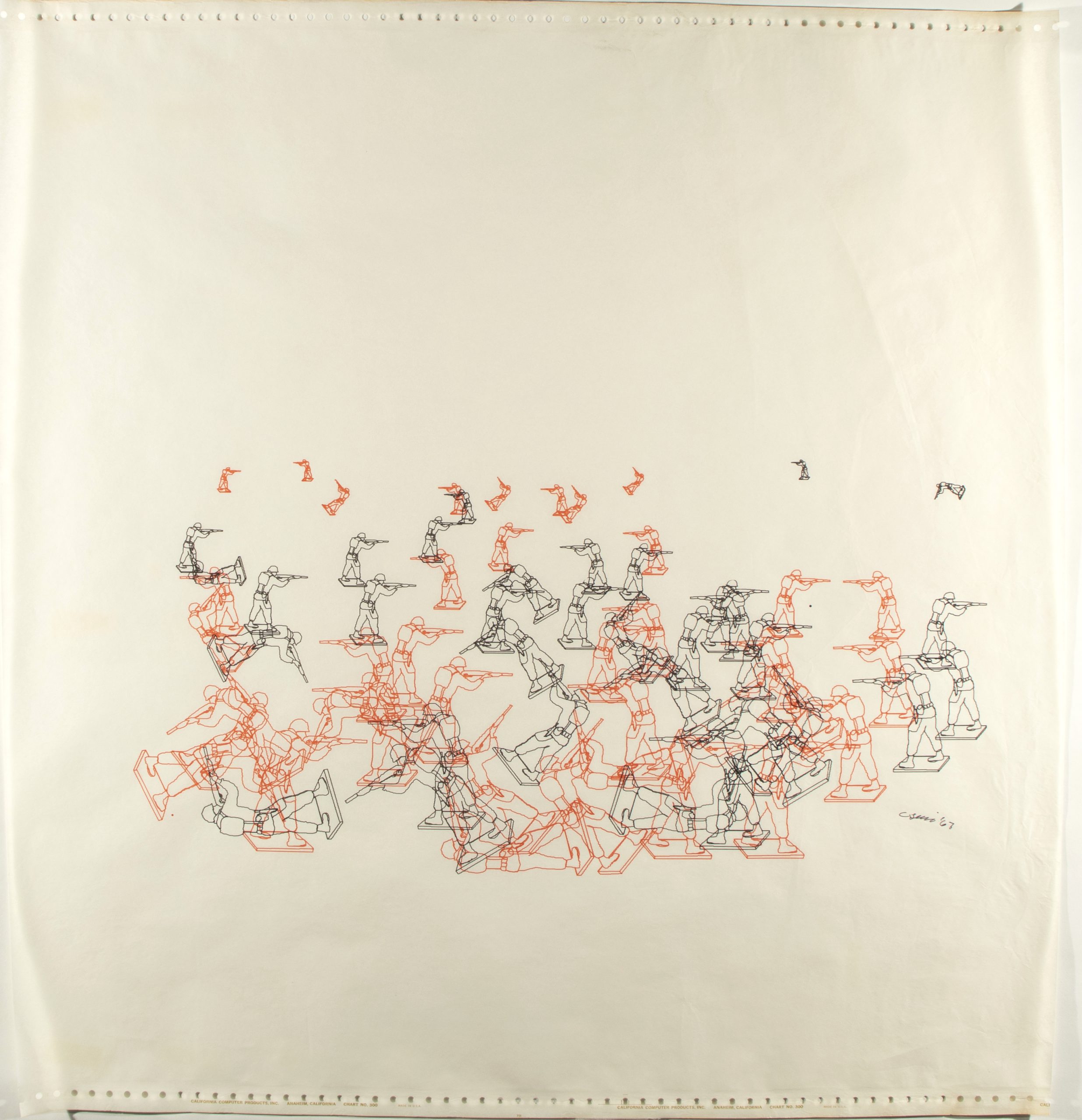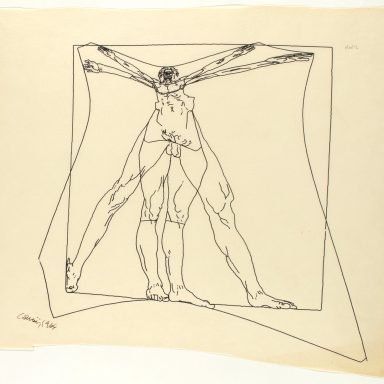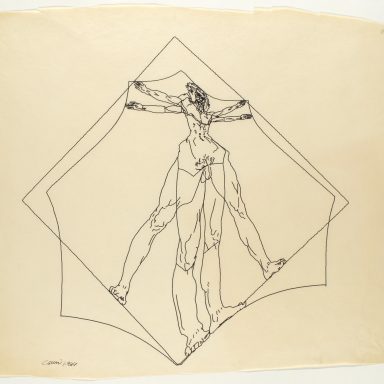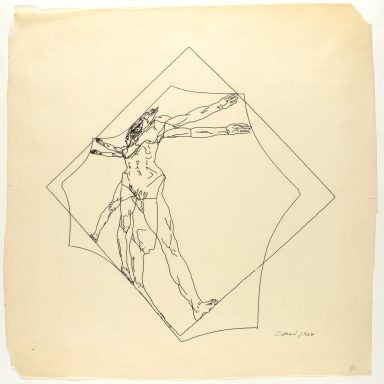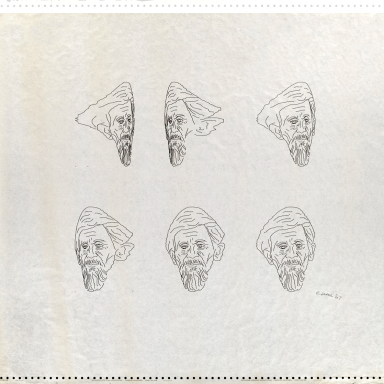Basic Information
Title: Random War
Artist(s):
Charles “Chuck” Csuri
Date Created: 1967
Unframed Dimensions: 31 x 29 in.
Medium: plotter drawing in ink on paper
Inventory ID: Csuri-1967-05
Description
signed and dated lower right in ink
hardware: IBM 7094
output machine: CalComp 565 drum plotter
“Featured at the opening at London’s Institute of Contemporary Arts ICA in 1968, “Cybernetic Serendipity” was one of the first international exhibitions devoted to the relationship between the computer and the arts. Artists, mathematicians, engineers, composers and poets all presented work in what is now seen as a landmark. This revolutionary artwork was one of the first examples of conceptual art and foreshadowed the computer game. It lead Csuri to the continuing theme of randomness, game like playfulness and innovation in his digital art creation. “Random War, arguably one of the most important works of the twentieth century, stands at the convergence of Csuri’s life experiences as a war veteran and the American Social upheaval that predominated at the time of it’s creation,” (Beyond Boundaries, p. 71-73). While the Vietnam War raged in Southeast Asia, antiwar sentiments divided the country. Generations of Americans struggled against each other at unprecedented levels. Csuri’s use of names underscores and personalizes the randomness and chaos of all wars. Some of the notable names used in this random game include Ronald Reagan, Gerald Ford, Robert F. Kennedy, Lyndon Johnson, James Bond, W.R. Rockefeller, Allen Kaprow, Arnold Palmer, Jack Nicolas, James Hoffa, Roy Lictenstein, and George Segal.”
– The Artist’s Website
“Identically formed soldiers coded in red and black diminish into a vertical ground plane. Two lists of serial numbers and names, one for each army, stretch across the upper register. The lists indicate which soldiers have died, which were wounded, which remain missing, and which survive. One hero is recognized on each side and is listed above the medals awarded for valor, good conduct, and efficiency. Random War, arguably one of the most important works of the twentieth century, stands at the convergence of Csuri’s life experiences and the American social upheaval that dominated the late 1960s. While the Vietnam War raged in Southeast Asia, antiwar sentiments divided the country. Generations of Americans struggled against each other at unprecedented levels. Technology was enthusiastically embraced in suburban households and touted by many as the savior of countless social and medical ills. Simultaneously, many perceived it as a demonic force that introduced chaos, depersonalizing and degrading human beings. To many in the art community, creating art with a computer was an act of evil in itself. Csuri was uniquely poised to conceive and render an aesthetic object of this scale and significance. A soldier and decorated veteran of World War II’s Battle of the Bulge, Csuri knew the battlefield and the horrors of war. As a fine artist, he understood the power of visual communication and the aesthetic object. As one naturally skilled in interdisciplinary collaboration, he could harness the computer’s potential and use it to advance the art world. The little green army man, the model for Csuri’s drawing of a soldier has iconic status in the American psyche. These two-inch-tall, green plastic figurines were an integral part of most boys’ toy sets until the late 1970s. Childhood memories of games played are permeated by adult sensibilities of the greater victories and losses that the figurines represent. Csuri captures the chaos of the battlefield by using a random number generator to place the forms on battlefield coordinates and to rotate the absurdly rigid bodies in two-dimensional space. A work brilliantly, conceived, Csuri entered the names of the living. Ohio State administrators, faculty, staff, and famous people, such as Ronald Reagan and Gerald Ford, become soldiers in Csuri’s Random War, suggesting war’s indiscriminate nature. Csuri even entered his own name into the random number generator, and it was ultimately assigned to the list of the wounded. Random War predates Maya Lin’s Vietnam War Memorial, The Wall (1982), which honors Vietnam War veterans through names carved in granite. Csuri’s use of names underscores and personalizes the randomness and chaos of all wars. Lin s work shows the grim outcome of Csuri’s predictions. Lin never met Csuri, and it is unlikely that she saw the original Random War, the whereabouts of which are unknown today.”
– Csuri Project, Ohio State University

